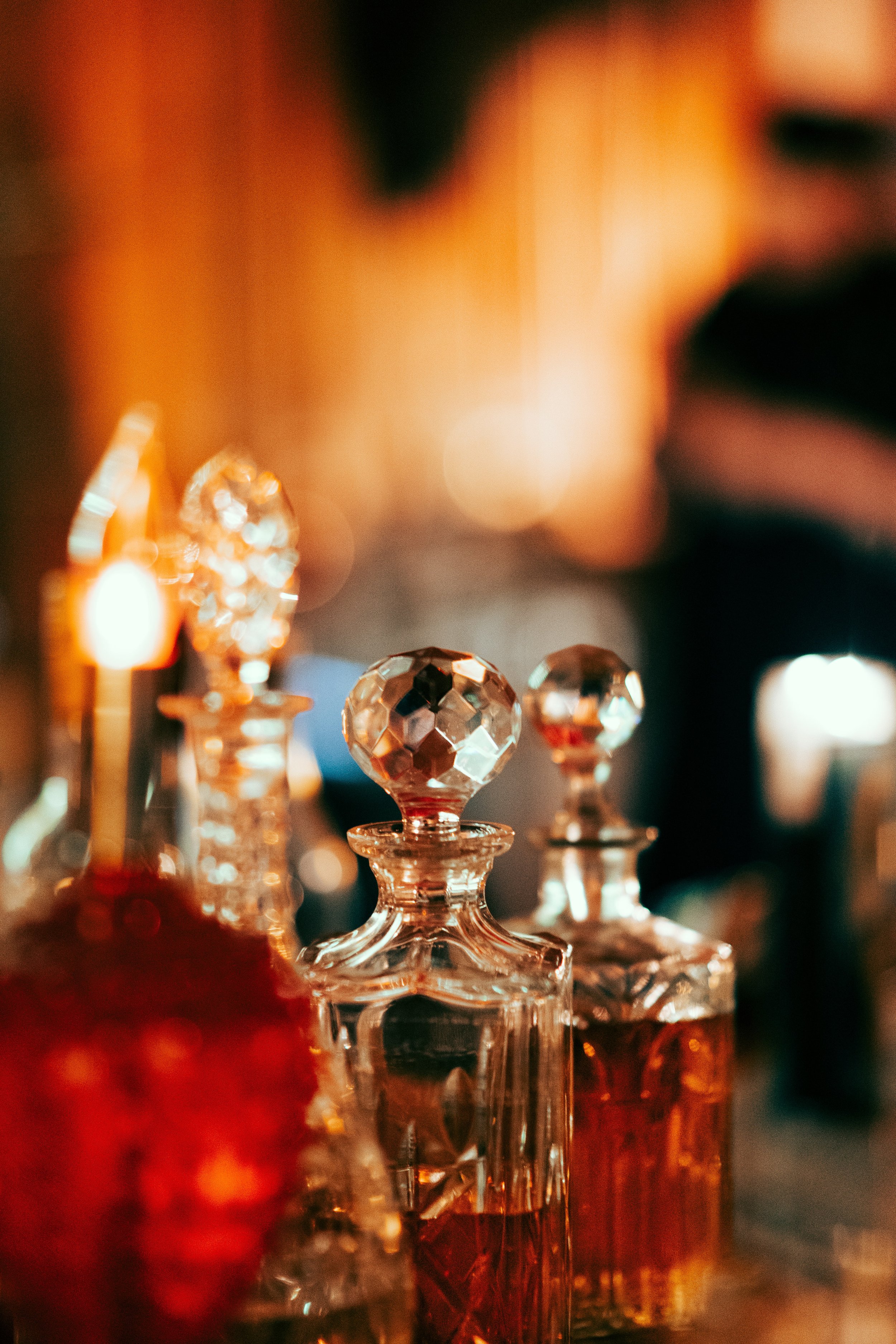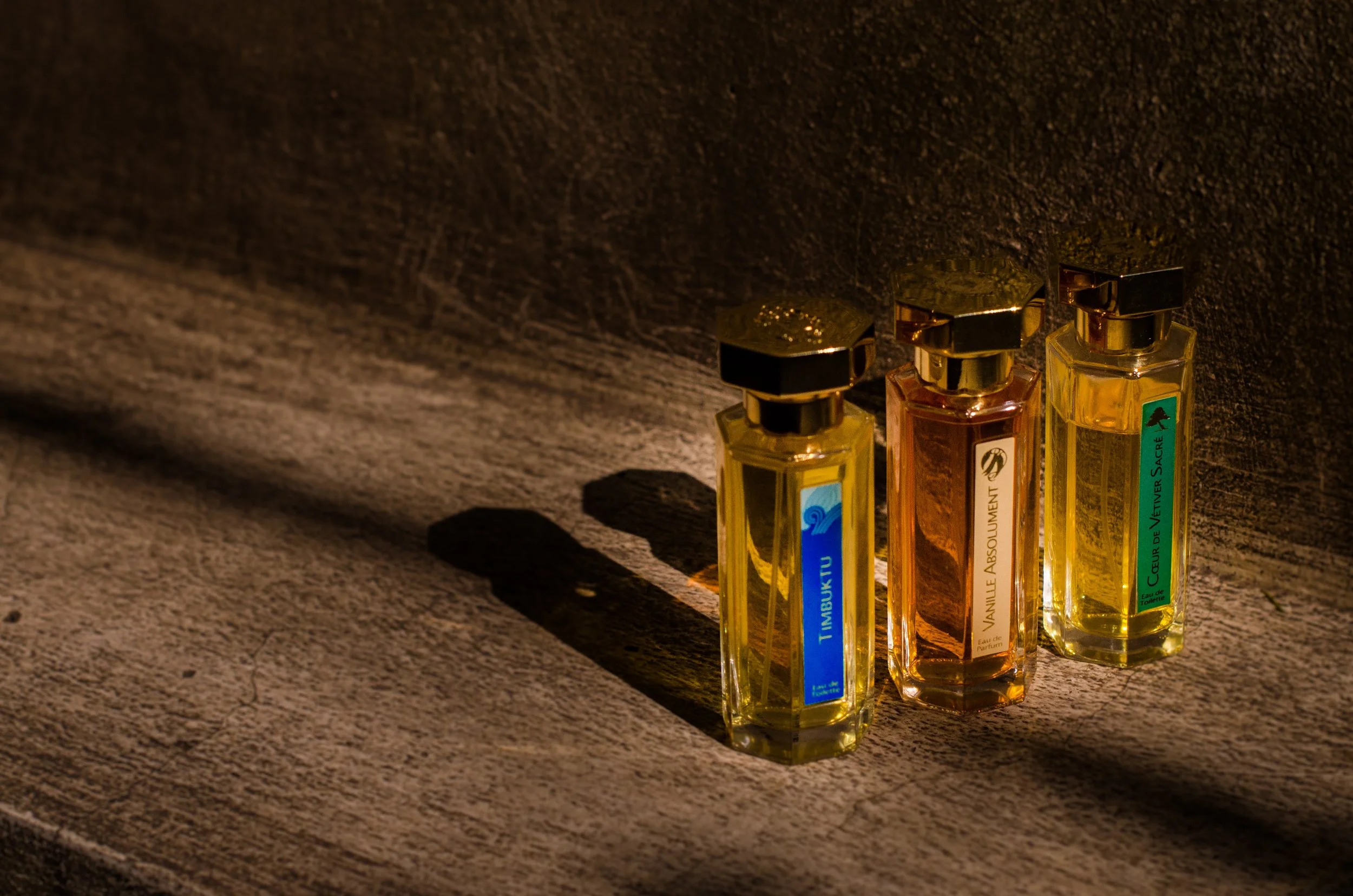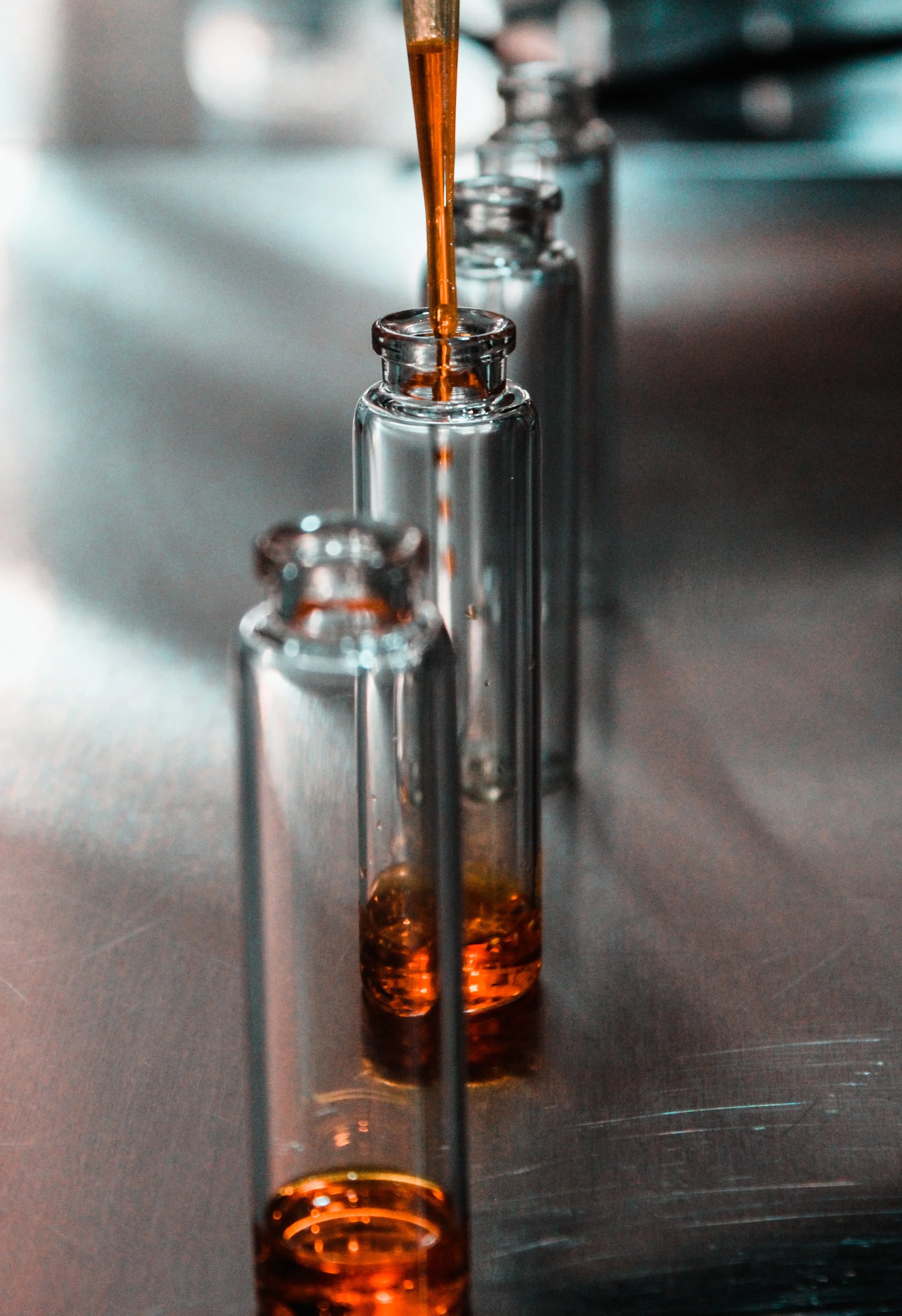Perfume: Accessorising Outside of Clothes

Accessorising Outside of Clothes: Perfume
When it comes to accessories, perfume has the potential to be one of the most powerful you could wear. Of the five senses, scent can be said to be the most powerful due to how it invokes memory and feelings within us of our friends, family, lovers, and the places we’ve been to. Fragrance, much like makeup, hair, or jewellery, can add to your style as a third layer of accessorising. It can be used as a faint background to your clothes, a loud statement that announces your presence to those around you, or an intimate whisper on your skin for those closest to you.
Perfume, however, can also be intimidating to learn about and start dabbling in- so read on to understand how you can start to use scent to your best advantage.
A Short History of Perfume
The usage of fragrance goes back thousands of years in cultures and societies all over the world. Particularly in societies where bathing was less culturally common or was only accessible to the uber-wealthy and powerful, people would use scented oil as part of their daily routine and upkeep- see the Egyptians as an example. Fragrance was not limited to perfume, with fragrant flowers, woods, spices, and incense such as sandalwood, oud, myrrh, and frankincense used in religious ceremonies and as luxurious gifts. Different cultures and countries became well known cultivators of sought after ingredients; Sambac Jasmine from India and China, Oud from Vietnam, and Damask Rose among many others.
Photo by William Bout on Unsplash
Where and from whom originates perfume varies. The first recorded perfumer was a Mesopatamian woman, found from cuneiform records in 1200 BCE, who first developed the basis for perfumery. Perfume in South Asia is known as Ittar or Attar, and mentions of early distillations can be found in two different Hindu Ayurvedic texts written between the fourth and second century BCE. Islamic scientists and scholars contributed greatly to the advancement of perfumery and fragrance, with perfume usage being dated as far back as the 6th century. Perfume became popularised with the rise of trade along the silk road, bringing it into Europe and popularising it with royalty there. Queen Elizabeth of Hungary popularised western perfume among Europeans by commanding the creation of scented oils blended into an alcohol solution, which became known as Hungary Water. France became known as European perfume royalty when they started to cultivate fragrance ingredients in the 1500s, and advanced the industrialization of perfume in the 1700s.
Getting into Perfume: Fragrance families, types, notes
Today fragrance and perfumery is a commercialised industry, with thousands of options high-end and low-end, both in-store and online.
Perfumes are typically split into fragrance families based on the genre of scent: warm, floral, fresh/citrus, earthy, and woodsy/spicy. These fragrance families can also be mixed, resulting in fragrance types such as spicy floral, woody fresh, warm earthy, and much more.
The typical perfume from a western brand can come in different options, and usually use perfumer’s alcohol as the carrier to make the liquid stable. If you’ve ever wondered what the french words on the perfumes in store are, they usually refer to the strength and concentration of perfume oil in alcohol and water. Anything that is labelled as ‘perfume’ has the highest concentration of pure fragrance oil at twenty to thirty percent, making it the strongest and also the most expensive. Eau de toilette, also abbreviated as EDT, has a concentration of five to fifteen percent fragrance oil, Eau de parfume (EDP) contains fifteen to twenty percent fragrance oil, and Eau de Cologne (EDC) contains two to four percent fragrance oil. Fragrances that have a higher concentration of pure perfume oil will last longer, but may irritate the skin, while fragrances with a lower concentration will wear shorter but have less alcohol as the fixative. For those looking to stay away from alcohol, fragrances also come in oils or as body sprays.
While fragrances can be incredibly complex and made up of multiple ingredients, perfumers tend to use the concept of ‘notes’. Notes are the description of the ingredients that hit the nose, and are separated into three types: the top notes, middle or ‘heart’ notes, and the base notes. The top notes are the first whiff of the perfume, which tend to fade quickly. The middle notes form the heart of the perfume, and are what you’ll smell as the top notes fade away, introduce new ingredients, and mellow out the base notes. The base notes are what you’ll smell once the perfume has dried down, lasting long and close to your skin instead of immediately noticeable by everyone in the vicinity. These all come together to make up the fragrance in your bottle.
Photo by Nati Melnychuk on Unsplash
Designer to Indie, Artisan to Niche; What’s the difference?
Perfume brands, or houses as they are commonly known, are often tagged with different descriptors; drugstore, designer, indie, niche, artisan, etc. For those unfamiliar, it can be intimidating to understand the difference. Fear not! Below is a handy list of words commonly used to describe perfume houses, and what they mean.
Designer
This word is used to describe perfumes created by luxury or designer fashion brands- familiar brands that also create popular perfumes include Versace, YSL, Dior, Prada, and Viktor and Rolf. Tapping into the luxury perfume market allows these brands to tap into a completely separate consumer demographic.
Indie
Indie, or independent, refers to brands that are completely independent and not owned by any other company or corporation. Indie perfume companies can vary from budget friendly houses to expensive, artisanal brands. These brands tend to be smaller businesses whose scents and fragance descriptions expand into territories designer houses rarely venture.
Niche
Niche brands refer to houses that completely focus on creating and selling fragrances. While they can have overlap with indie brands, niche brands do not have to be completely independent to be considered niche.
Artisan
Artisan brands are those that are made with originality, in house and handmade as artisans, rather than made by factory, and are not mass-produced. These two qualities tend to make such brands pricier than others.
Bespoke
Very, very, few brands are exclusively bespoke due to the expense and labour involved, but for those who can afford it and the brands who offer it, bespoke refers to custom-made perfumes that are original and signature to the customer.
Synthetic vs. Natural?
The debate between whether natural ingredients or synthetic ones are better does not stop at the fragrance industry, and can leave new-comers wondering which is better to purchase. Many perfumers often use a combination of natural and synthetic ingredients in order to create their fragrances, using each to make their perfume blends as best as they can be.
Photo by Trung Do Bao on Unsplash
Many have argued that natural ingredients make for better smelling and more ethical perfumes. On the one hand, it should make sense that the nature perfumers derive and take inspiration from should be the source of them. On the other hand, the situation of using all-natural ingredients isn’t as clear cut and dry.
The synthetic ingredients in perfumes are known as aroma chemicals, and have been in usage for the past few centuries. Aroma chemicals are able to capture scents that oil derived from natural ingredients often can’t, can mimic these scents to make them last longer, and create all-new scents that simply can’t be derived from natural ingredients. They also mimic ingredients that were once derived from animals- musk and ambergris, two ingredients with a long history in perfumery, were each respectively made from the anus of a beaver and from the digestive stomachs of sperm whales. Aroma chemicals that mimic these two smells both reduce cost and the need to hunt down beavers or the excretions of whales. Cost reduction and availability of ingredients is another reason why many brands will use synthetic chemicals as opposed to natural ingredients.
Ethically and environmentally, using all natural ingredients can lead to over consumption of natural ingredients and an over consumption of the local area’s resources. The growing and consumption of ingredients such as resin, amber, woods such as sandalwood or oud, and flowers- all commonly used in fragrances- can take over valuable resources such as water, farmland, or forestry. With these ingredients also being volatile to their local environment, prices and availability can come and go.
Okay, I got it. Where do I start?
Now that you’ve primed yourself on the history, types, brands, and ingredients of fragrance, you may be wondering where do you even start?
Photo by Fulvio Ciccolo on Unsplash
Start by sniffing and sampling perfumes from your local stores- this can include Shoppers, Rexalls, and Sephora. Spray the perfumes you’re interested in first on paper strips, and then onto your skin. The paper samples will tell you what the perfume smells like straight out of the bottle, but testing it on your skin is the only way to truly know whether or not you’ll like it. Everyone’s personal skin PH tends to react differently to different fragrances- it’s why you’ll see polarising reviews of different perfumes. Understanding what notes and fragrance families do well with your skin chemistry will help you understand what smells good to you.
Once you’ve understood what kind of smells you like, it’s time to start sampling and buying. Many stores and brands will sell one to two millilitres of perfume, and some often sell sample sets. Certain stores such as Shoppers have small samples on hand, but you may have to ask or strike up a good conversation with the sales person. For bargain deals, Shoppers also has a rotating shelf of twenty dollar perfumes, while stores such as Bath and Body Works have body sprays that just need a little more re-application than a perfume. If you’re more interested in indie brands, many can be found on Etsy or online, and may require a little bit of research if they aren’t mainstream. A good rule of thumb is to only purchase a full size of the bottle once you’ve finished the sample.
Perfume enthusiasts often recommend spraying or rubbing on your fragrance at pulse points- behind your ears, the back of your neck, and on your wrists are two of the most common areas (if an alcohol based fragrance, tap lightly on your wrists instead of rubbing so the fragrance stays longer). Other areas you can scent yourself with are your elbows, behind each shoulder, behind your knees, your inner thighs and the back of your ankles. These areas all emanate heat and will project your perfume more so that others are easily able to smell it, as well as extend the longevity of your fragrance. If you have a perfume oil, you can also use it as a bath oil or in your hair- alcohol based oils can be destructive in either.
Can I go now? I’m dying to sample!
Yes, you’ve got it! Just remember to have fun and not worry about what others are buying or what perfume or cologne is trending. Scent is an intimate journey, and it can be incredibly fun to discover just what smells are special to you and you alone.
Minh Truong is a recent Communication and Media studies graduate from Carleton University and is currently working in the government as an IT comms analyst. When not sipping on a lactose-free chai latte or playing with her very handsome cat, you can catch her info-dumping about all her favourite things over at her Instagram @justminhty








